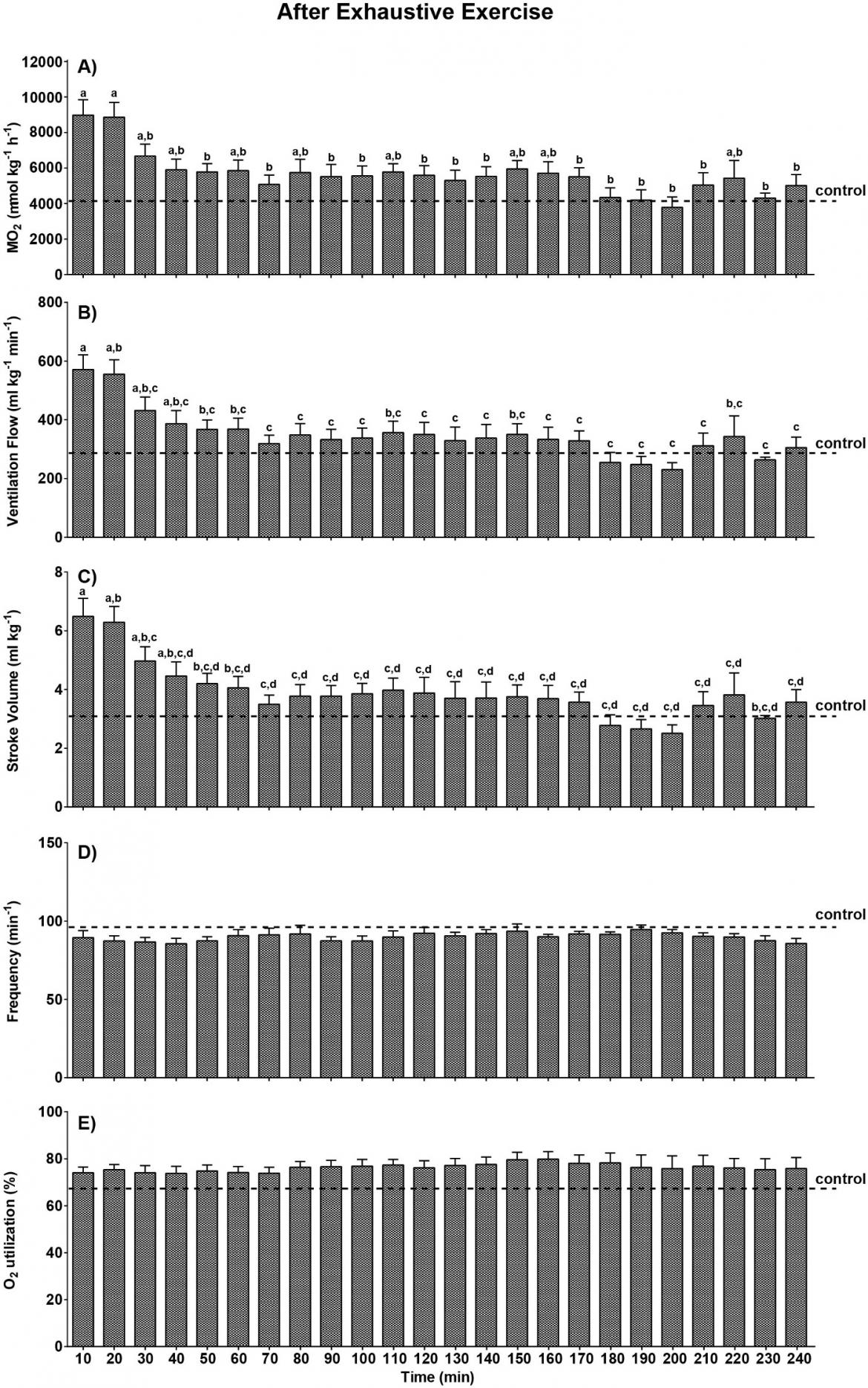
Figure 3. Measured and calculated respiratory parameters (means ± 1 S.E.M.), averaged over 10-min intervals in trout during 4 h of recovery from exhaustive exercise (N = 10). (A) Oxygen consumption rate, ṀO2 (one-way repeated measures ANOVA p < 0.0001); (B) Ventilation flow rate, V̇w (one-way repeated measures ANOVA p < 0.0001); (C) Ventilatory stroke volume, Vsv (one-way repeated measures ANOVA, p < 0.0001); (D) Ventilatory frequency, fr (one-way repeated measures ANOVA, p = 0.7026); (E) Oxygen utilization, % U (one-way repeated measures ANOVA, p = 0.9997). In each panel, means sharing the same letters are not significantly different (p > 0.05, Tukey’s test). The dashed lines indicate the mean values for the similarly handled control fish (from Fig. 2) for reference
Abstract
A new “less invasive” device incorporating an ultrasonic flow probe and a divided chamber, but no stitching of membranes to the fish, was employed to make the first direct measurements of ventilatory flow rate (V̇w) and % O2 utilization (%U) in juvenile rainbow trout (37 g, 8ºC) after exhaustive exercise (10-min chasing) and voluntary feeding (2.72% body mass ration). Under resting conditions, the allometrically scaled V̇w (300 ml kg−1 min−1 for a 37-g trout = 147 ml kg−1 min−1 for a 236-g trout exhibiting the same mass-specific O2 consumption rate, ṀO2) and the convection requirement for O2 (CR = 4.13 L mmol−1) were considerably lower, and the %U (67%) was considerably higher than in previous studies using surgically attached masks or the Fick principle. After exhaustive exercise, V̇w and ṀO2 approximately doubled whereas frequency (fr) and %U barely changed, so increased ventilatory stroke volume (Vsv) was the most important contributor to increased ṀO2. CR declined slightly. Values gradually returned to control conditions after 2–3 h. After voluntary feeding, short-term increases in V̇w, Vsv and ṀO2 were comparable to those after exercise, and fr again did not change. However, %U increased so CR declined even more. The initial peaks in V̇w, Vsv and ṀO2, similar to those after exercise, were likely influenced by the excitement and exercise component of voluntary feeding. However, in contrast to post-exercise fish, post-prandial fish exhibited second peaks in these same parameters at 1–3 h after feeding, and %U increased further, surpassing 85%, reflecting the true “specific dynamic action” response. We conclude that respiration in trout is much more efficient than previously believed.